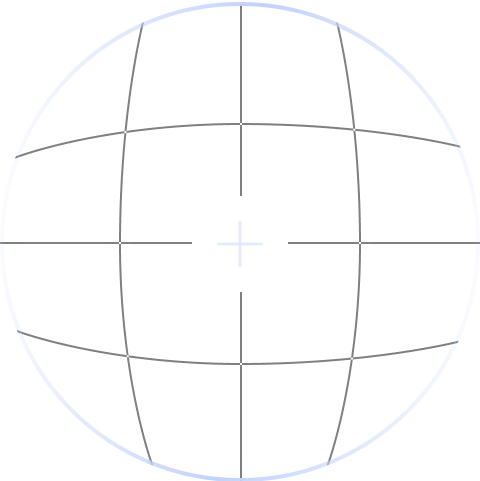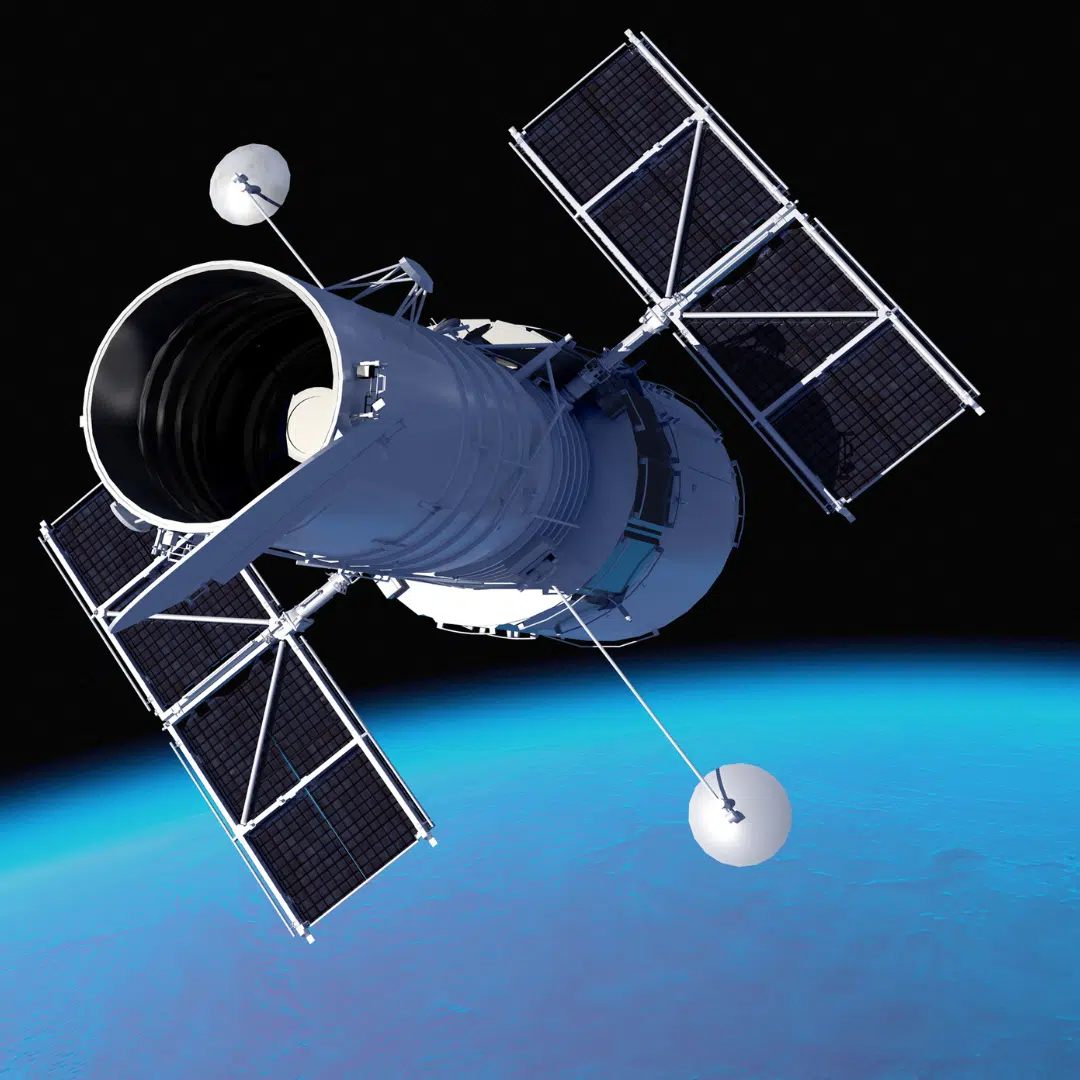The Trifid Nebula is one of the most beautiful sights in the night sky. It is a large cloud of gas and dust far away from Earth that shines in different colors.
When people look at it through a telescope, they often notice its bright reds, soft blues, and dark patches that make it stand out.
The nebula is a favorite target for astronomers and photographers because of its unique appearance.
While it is very far from us, learning about it helps spark curiosity about space. This nebula reminds us how amazing and mysterious the universe truly is.
Location of the Trifid Nebula
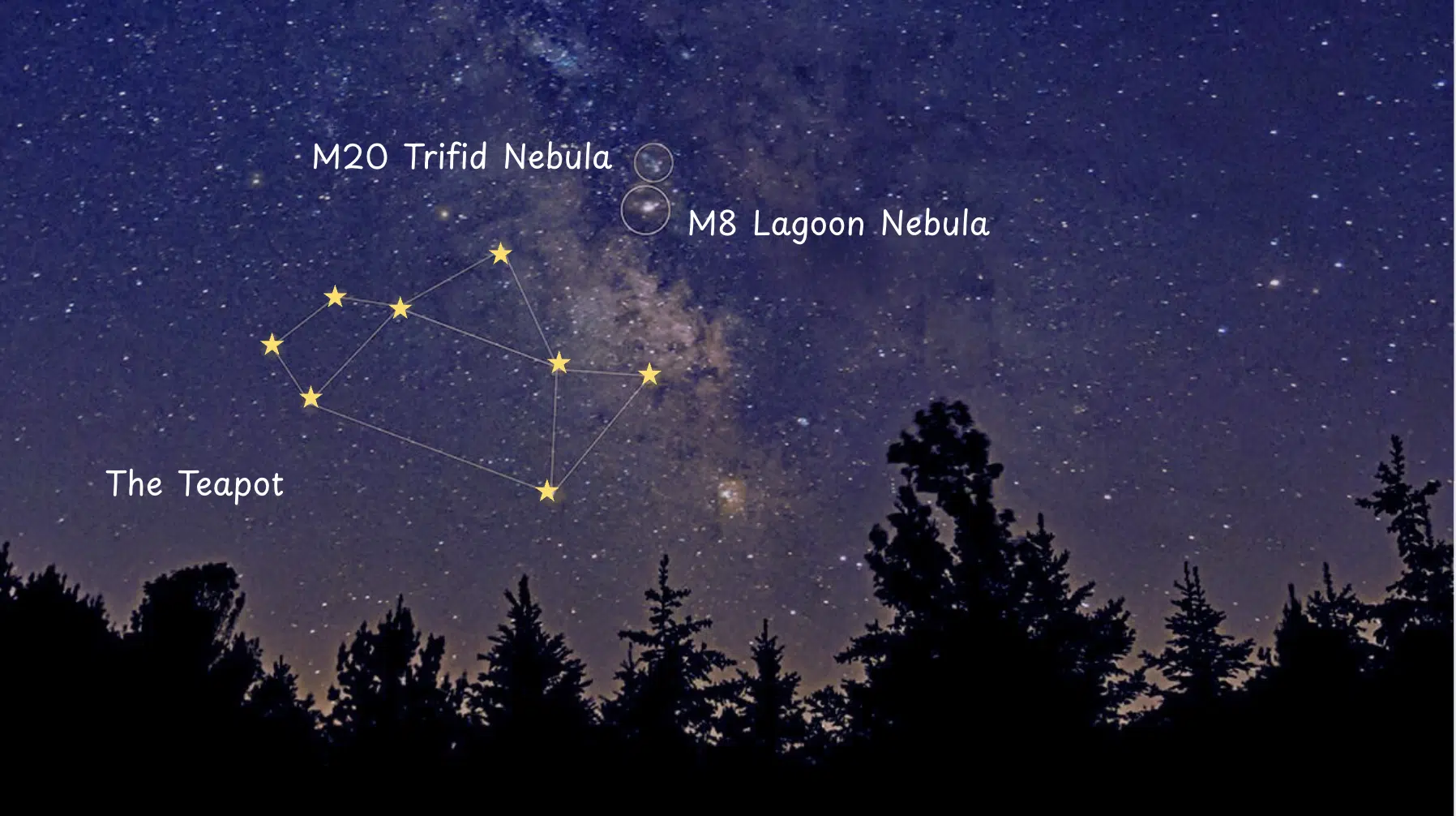

This nebula is located in the constellation Sagittarius, a rich area of the Milky Way filled with stars and glowing clouds.
When viewed through a telescope, it appears as a bright and unusual patch of light surrounded by other deep-sky objects.
To locate it, aim your telescope or binoculars toward the Teapot asterism, a well-known group of stars that forms the shape of a teapot.
Although it’s not an official constellation, this star pattern is easy to spot once you know its outline. It lies near the spout of the Teapot, close to the Lagoon Nebula.
From mid-northern latitudes, the Teapot appears due south and is highest in the sky around midnight in early July, making this the best time to observe the Trifid.
Quick Facts about the Trifid Nebula
The Trifid Nebula is a mix of color, light, and dust that tells the story of star formation. These quick facts highlight its main features and show why it’s one of the most admired objects in the Milky Way.
| Detail | Information |
|---|---|
| Designation | Messier 20 (M20) / NGC 6514 |
| Constellation | Sagittarius (The Archer) |
| Type | Combination of Emission, Reflection, and Dark Nebula |
| Distance from Earth | Around 5,000-9,000 light-years |
| Size | Around 40 light-years across |
| Apparent Dimensions | About 28 arcminutes × 28 arcminutes |
| Visual Magnitude | About +6.3 (visible through small to medium telescopes under dark skies) |
History of the Trifid Nebula
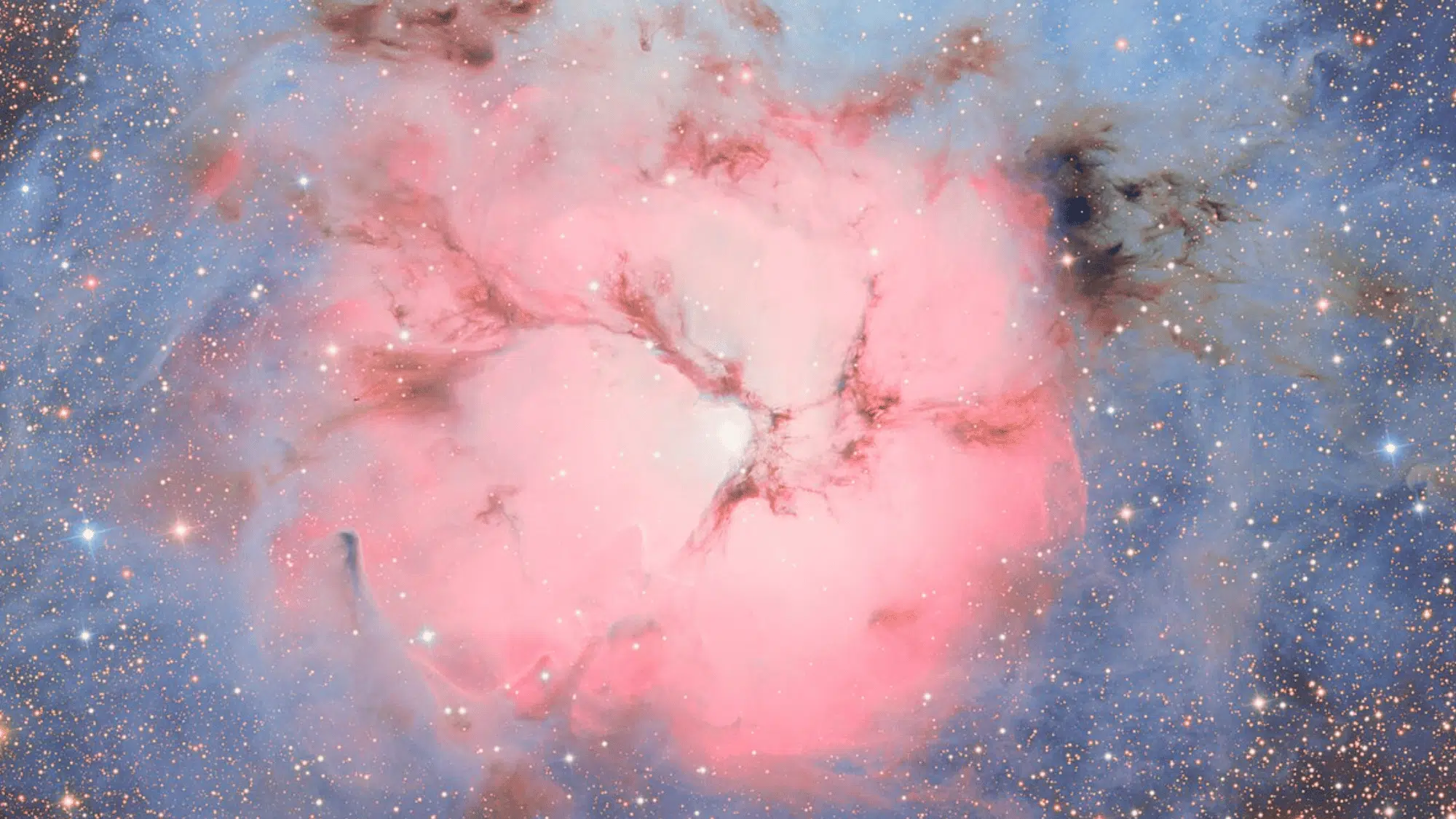

Image Source: Wikipedia
This nebula was first noticed in 1764 by the French astronomer Charles Messier.
Messier was making a list of objects in the sky that might look like comets but were not, which later became the Messier Catalog.
This nebula was given the name M20 in this catalog. The word “Trifid” means “divided into three,” describing how the dark lines of dust seem to cut the nebula into three bright parts.
Later, space telescopes like Hubble revealed the bright colors and star-forming regions we see in modern images.
Today, it remains a popular target not only for scientists but also for amateur astronomers and astrophotographers who capture it with backyard telescopes.
Characteristics of the Trifid Nebula
This nebula is unique because it displays three distinct types of nebulae within a single object. The nebula is a combination of three nebula types:
Emission Nebula:
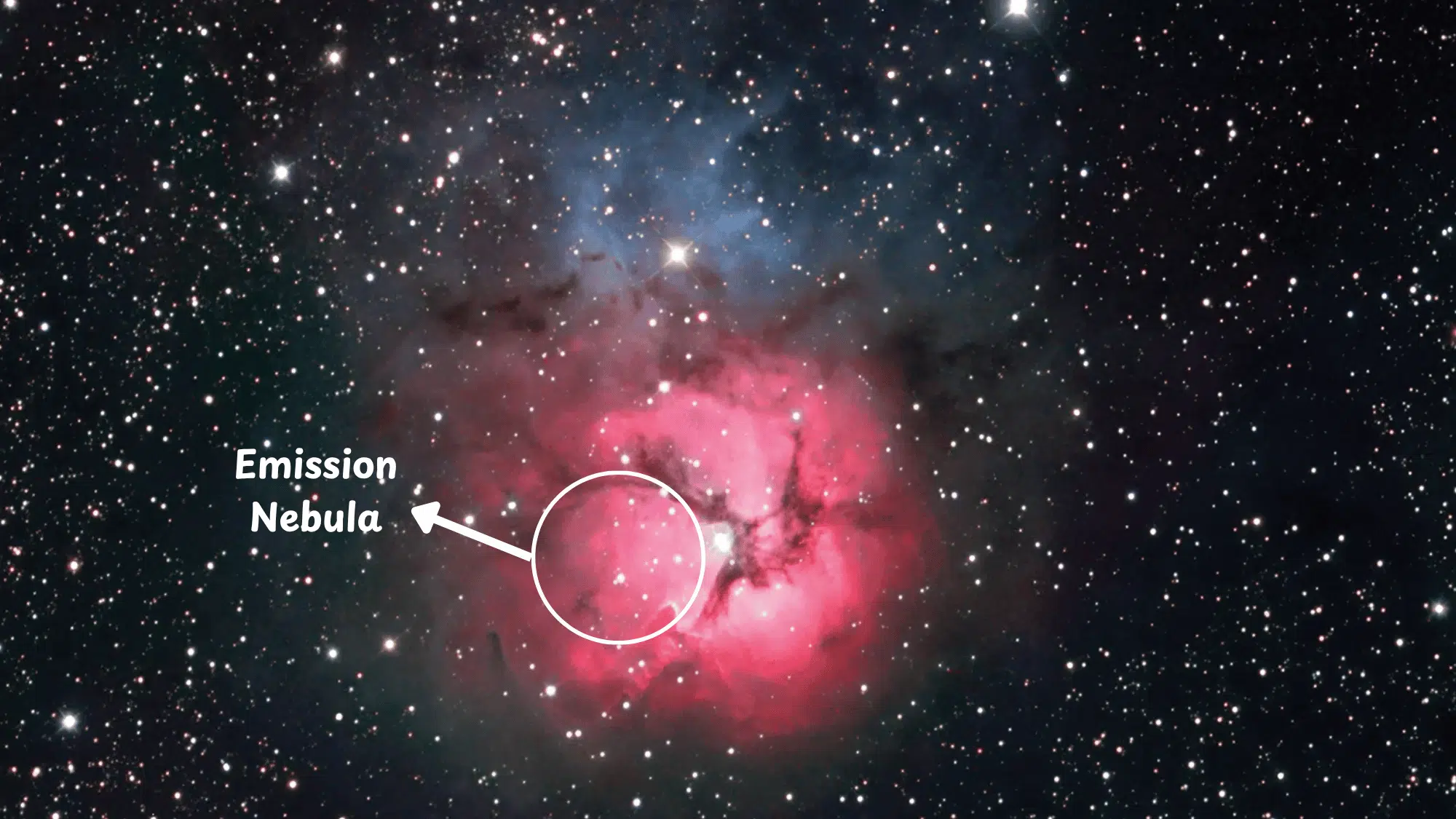

The red glow of this nebula comes from its emission regions. Here, hydrogen gas is energized by nearby young stars, causing it to shine brightly.
This glowing gas outlines the main structure of the nebula and makes it easy to spot in photographs.
Scientists study these regions to understand how energy from stars affects the space around them.
Emission nebulae like this also provide clues about the chemical makeup of galaxies and play a key role in showing where new stars are forming.
Reflection Nebula:
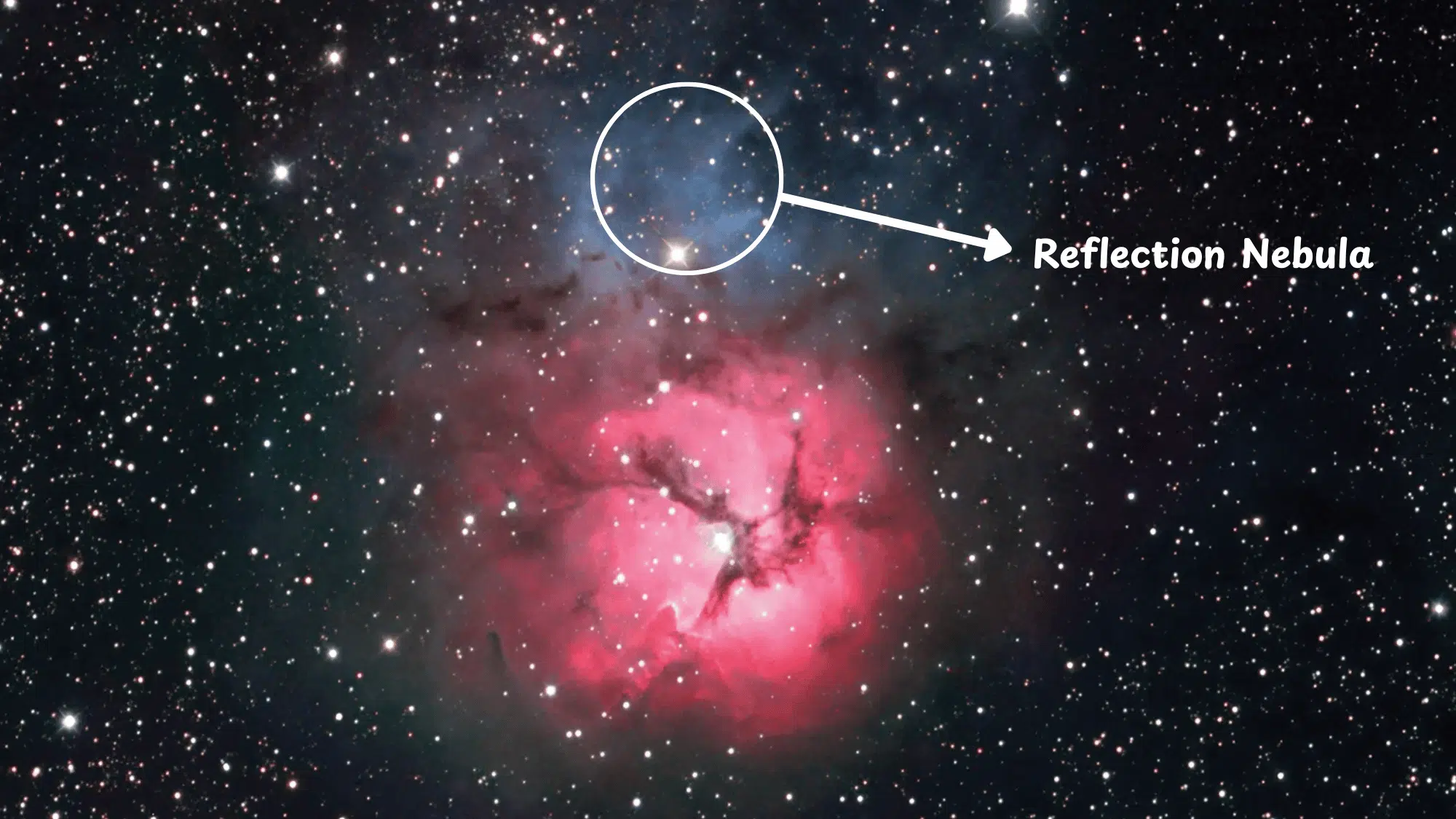

The blue parts of are this nebula are the regions of reflection.
These areas do not create their own light. Instead, they reflect the light of nearby stars.
The dust within these regions scatters the starlight, giving the nebula its bright blue color. Reflection nebulae like this one are important because they reveal how dust spreads and moves in space.
They also show how nearby stars influence their surroundings. Without reflection nebulae, many regions of space would remain hidden in the dark.
Dark Nebula
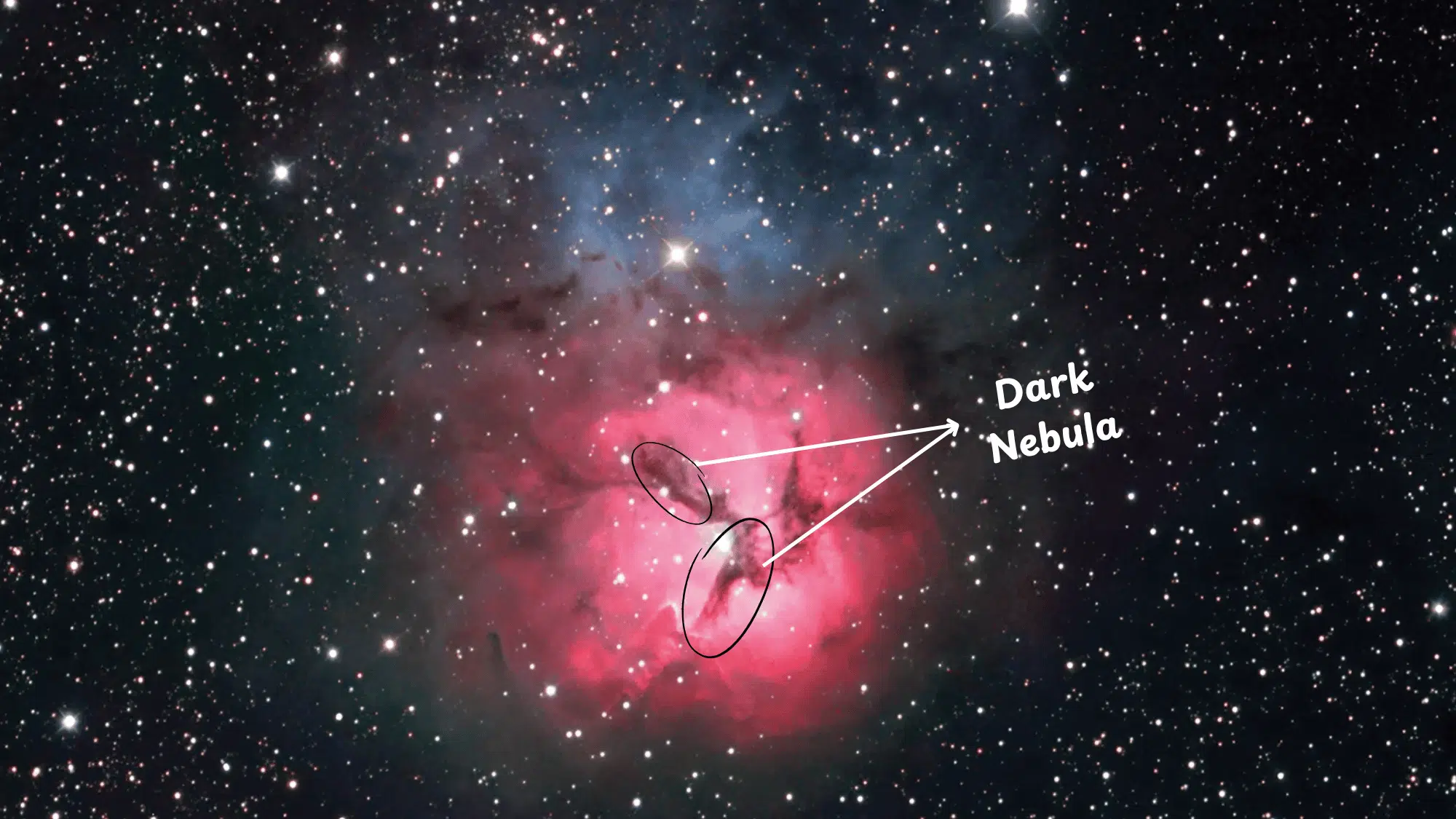

Dark nebulae are thick clouds of dust that block light, and they give this nebula its divided, three-part look.
These dark lines cross through the glowing red and blue areas, making the nebula appear split. They are also places where new stars may form, as gravity pulls gas and dust together.
Studying these regions helps astronomers learn how stars are born inside these hidden, shadowy areas. Dark nebulae act like nurseries for the youngest stars.
They also shape the appearance of the nebula, giving it its famous three-lobed form.
Scientific Importance of the Trifid Nebula
This nebula is important because it helps scientists understand how the universe works.
Inside the nebula, new stars are forming in the dense clouds of gas and dust, giving astronomers a close look at the process of star birth.
The bright young stars also send out energy that heats the gas around them, showing how stars shape and change their surroundings.
By studying these effects, scientists can gain a deeper understanding of the life cycle of stars, from their earliest stages to their later phases.
The Trifid is also valuable for learning about galaxies, since nebulae like it are the places where galaxies create and recycle their stars over time.
How to Capture the Trifid Nebula
A telescope with a motorized mount helps track the nebula as the Earth moves, keeping the image clear during long exposures.
Good beginner choices include the Celestron NexStar 6SE or Sky-Watcher Evostar 80ED, both known for their clear optics.
A Canon EOS Ra or Nikon D5600 camera can capture deep-sky objects with good color and detail. To get sharp images, take several long-exposure photos and combine them using photo-editing software.
The nebula is best photographed between June and August when it is higher in the sky.
Shooting from a dark, open area away from city lights will help reveal the nebula’s structure and soft colors more clearly.
Fun Facts about the Trifid Nebula
This nebula is not only important for science but also full of surprising details. Here are a few interesting facts that make it stand out in the night sky.
- This nebula is about 40 light-years across, which means it would take light 40 years to travel from one side to the other.
- It lies close to another famous space object, the Lagoon Nebula, making this region of the sky very rich in star-forming areas.
- The dark dust lanes that divide the nebula are so thick that they block out the light from stars behind them.
- Some of the youngest stars in this nebula are only a few hundred thousand years old, which is very young in cosmic terms.
- The nebula’s mix of red, blue, and dark regions makes it rare, since few nebulae show all three types so clearly in one place.
Conclusion
The Trifid Nebula is a window into the beauty and mystery of the cosmos.
Its glowing clouds, dark lanes, and hidden stars remind us that space is full of wonders waiting to be found.
By studying it, astronomers gain valuable knowledge about how stars and galaxies grow, while the rest of us can simply enjoy its breathtaking view.
Learning about places like the Trifid helps us see how vast and creative the universe truly is. If you enjoyed this guide, be sure to share it and keep reading for more exciting information about the night sky.




